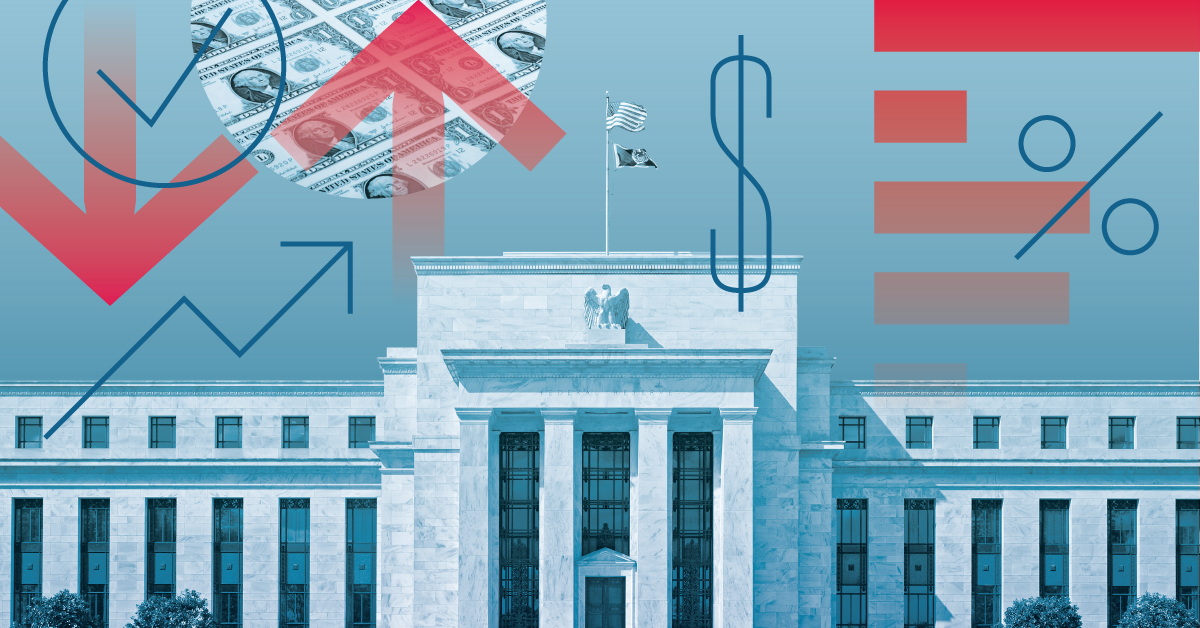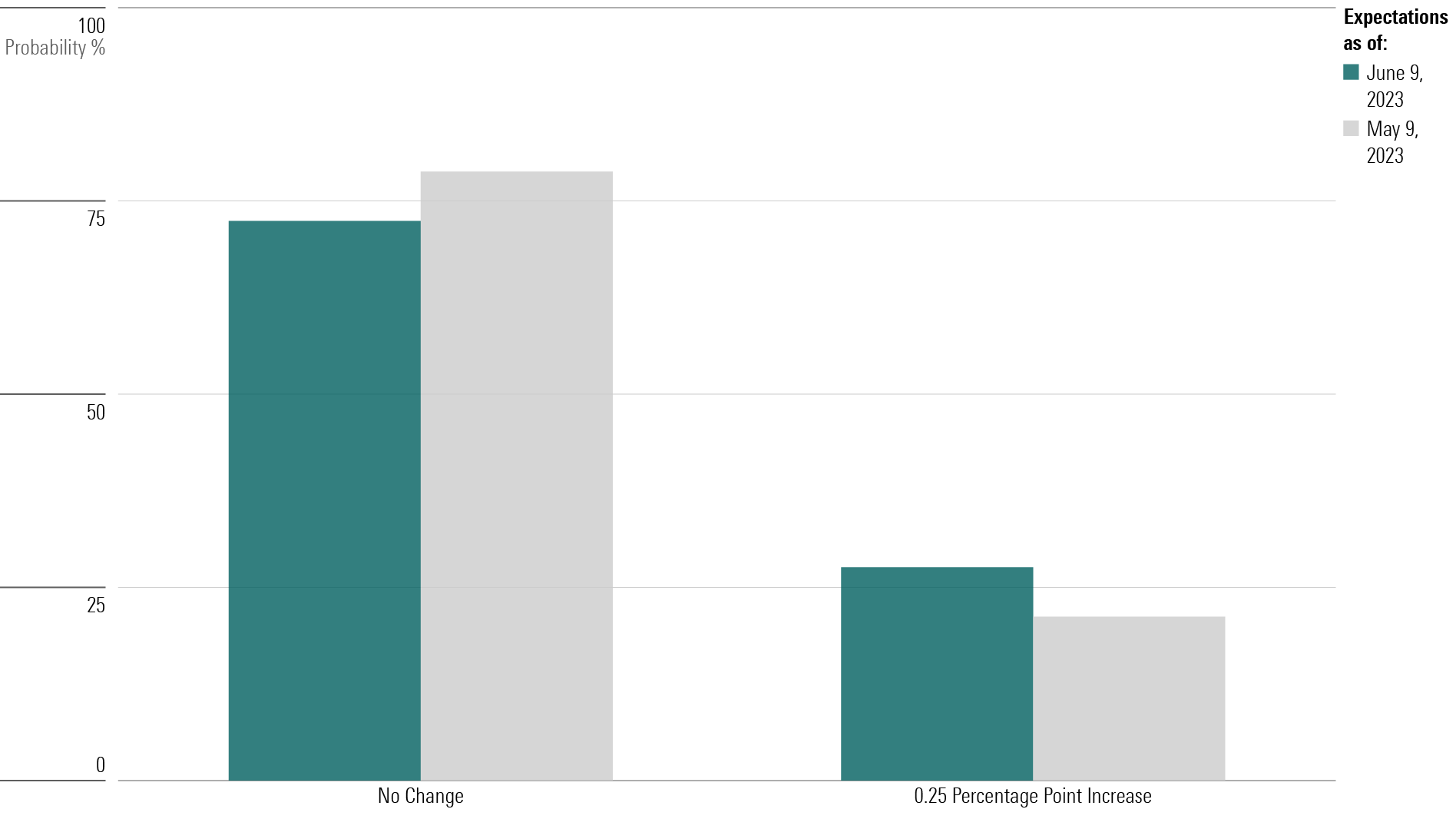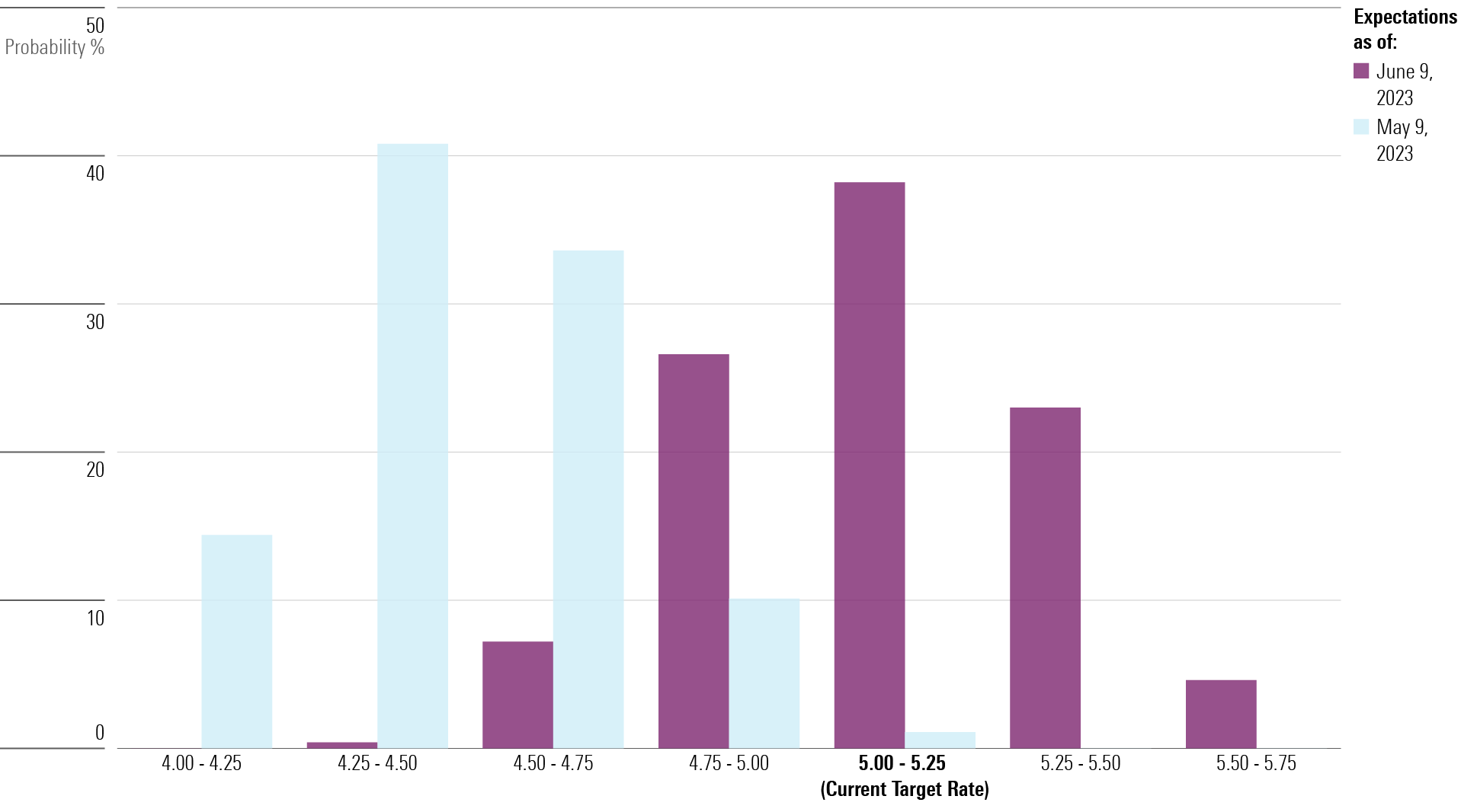Fed Meeting Preview: Will Powell Unveil a Rate-Hike Pause or a ‘Skip’?
Another rate hike is believed possible in July, as expectations have faded that the Fed will lower rates in 2023.

Chances are, whatever decision the Federal Reserve makes on interest rates at this week’s policy-setting meeting won’t be what matters most for the markets. The focus is instead likely to be on what Fed Chair Jerome Powell and the other officials signal that they’re thinking of doing next.
Expectations for the June meeting are solidly centered around the Fed keeping interest rates steady for the first time since it began the current cycle of monetary policy tightening in March 2022.
Just a few weeks ago, the most pressing question might have been how long a pause the Fed would take before it felt comfortable pivoting to lowering rates. Instead, there’s a growing sense that the June meeting might be a “skip” before another rate hike in July.
“We’re set up for a June meeting where there’s no rate move, but the debate is to see whether that event is a pause or a skip,” says Donald Rissmiller, chief economist at Strategas Research Partners. “Is this the start of a long period of a flat fed funds rate, or is this moving to an every-other-meeting type of trajectory where July is live for a rate cut?”
Going into the June meeting, the Fed has already raised interest rates at ten consecutive meetings as it has attempted to push inflation down from a four-decade high. That streak included an unprecedented four straight meetings at which the central bank lifted the funds rate by three-quarters of a point. Before this rate hike cycle, the funds rate was effectively zero, having been slashed as the Fed battled the COVID-19 recession.
Now, the bond market is priced for the Fed to hold the federal-funds rate at its current target of 5.00%-5.25%. According to the CME FedWatch tool, which reflects bets placed by traders on the direction of interest rates, there’s a 71% chance that the Fed will announce it is holding rates steady at the end of the two-day meeting Wednesday.
Federal-Funds Rate Expectations for June 2023 FOMC Meeting

Expectations that the Fed will keep rates steady in June come against the backdrop of a still-hot jobs market, as well as inflation that, while down from its peak last year, is still well above the Fed’s 2% target.
But it’s widely expected that the Fed wants to at least slow the frequency of interest rate increases as it assesses the impact of its rate increases over the past 14 months.
“Traditional monetary policy works with a lag,” says Rissmiller, adding that the Fed has noted this dynamic in its policy statements and that officials, including Powell, have emphasized it in public comments.
U.S. Treasury Yields and Federal-Funds Rates
“At the margin, it reinforces the idea of pausing or skipping—at least slowing down,” he says. “”Inflation looks like it has peaked, so you’re getting some of what you want. Do you need to be raising rates at every meeting?”
Expectations Swing on Fed Rate Cuts
Looking beyond the June meeting, however, opinions about where the Fed will go next have been changing dramatically.
In the wake of the May meeting, bond market prices began suggesting the Fed could lower rates as soon as the third quarter, with the potential for multiple rate cuts before the end of the year.
On May 9, the CME FedWatch tool pegged the odds of a quarter-point rate cut by year-end 2023 at roughly 34%. Even more dramatically, it set a 41% chance that the Fed would lower the funds rate by half a percent before 2024.
However, as the economy has remained buoyant and inflation high, expectations have been scaled back significantly around Fed easing this year. The market is giving a 25% chance of a quarter-point rate cut before the end of 2023. Those are roughly the same odds now assigned to the Fed raising rates again this year.
Federal-Funds Rate Expectations for December 2023 FOMC Meeting

At Morningstar, senior U.S. economist Preston Caldwell is in the camp that believes the June meeting will see the Fed shift to holding rates at current levels until it cuts them at the end of 2023. “The Fed will pivot to monetary easing as inflation falls back to its 2% target and the need to shore up economic growth becomes a top concern,” he writes.
Caldwell predicts the Fed will cut rates by a quarter of a percentage point by the end of 2023, and take it below 2% by mid-2025.
Will the Fed Raise Rates in July?
Meanwhile, Kevin Nicholson, chief investment officer at RiverFront Investment Group, is among those expecting that the June meeting will prove to be a “skip” and that the next move is another rate increase in July.
“It’s my expectation that they will raise another 25 basis points in July, but I think that they want to pause because of the lagged effects of monetary policy,” Nicholson says.
Nicholson points to the strength of the jobs market and consumer spending as supporting the need for the Fed to notch interest rates a bit higher and then hold them steady through the end of the year. “If you don’t get inflation to really slow down meaningfully, if you don’t get labor (markets) to soften more, then you run the risk of having inflation start to take off again,” he says.
Ultimately, Nicholson says the U.S. economy should begin to slide into a shallow recession in 2024, with portions of the economy having already experienced slowdowns.
Strategas’ Rissmiller also sees the potential for another rate hike. He points to interest rate increases by central banks in Canada and Australia as being similar to the dynamic in the United States. “The general theme seems to be that central banks are aiming for restrictive policy, and they’re not there just yet, so there’s more effort to go,” he says.
“It seems to me the mistake is no longer the recession … I don’t think that’s the biggest fear at the Fed or other central banks,” says Rissmiller. “It seems like the biggest fear is losing the anchor on inflation expectations.”
As a result, Rissmiller says, “I would look for a skip in June and a communication that July is starting out as a likely hike unless the data changes. The perception is the job’s not done.”
The author or authors do not own shares in any securities mentioned in this article. Find out about Morningstar’s editorial policies.

/s3.amazonaws.com/arc-authors/morningstar/ed529c14-e87a-417f-a91c-4cee045d88b4.jpg)
/cloudfront-us-east-1.images.arcpublishing.com/morningstar/F2S5UYTO5JG4FOO3S7LPAAIGO4.jpg)
/cloudfront-us-east-1.images.arcpublishing.com/morningstar/7TFN7NDQ5ZHI3PCISRCSC75K5U.png)
/cloudfront-us-east-1.images.arcpublishing.com/morningstar/QFQHXAHS7NCLFPIIBXZZZWXMXA.jpg)
:quality(80)/s3.amazonaws.com/arc-authors/morningstar/ed529c14-e87a-417f-a91c-4cee045d88b4.jpg)